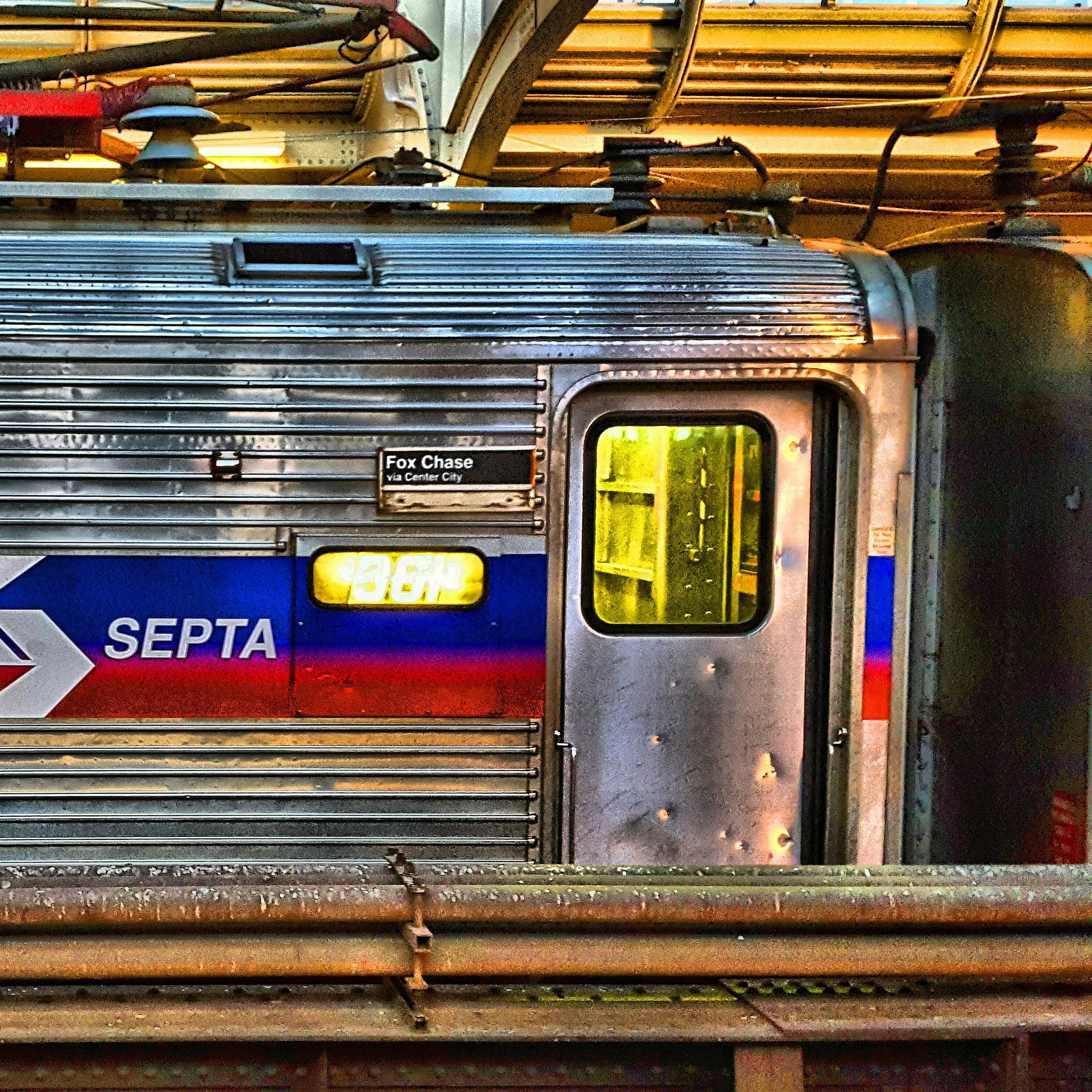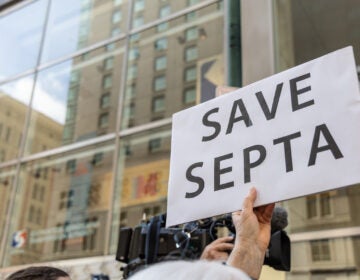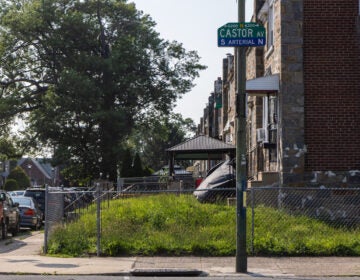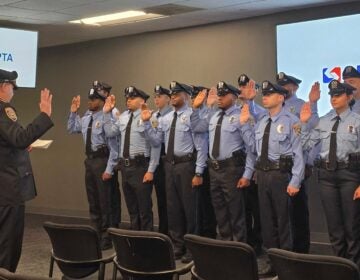Analysis: How SEPTA can turn Regional Rail in Philly into high-frequency rapid transit

Philadelphia has a bunch of passenger rail lines, but only a few fast and frequent enough to be considered “rapid”: PATCO and SEPTA’s Broad Street and the Market Frankford Elevated Lines. All of the many Regional Rail lines are considered commuter rail, most running no more than once an hour off-peak and only a few times an hour at rush hour.
SEPTA has recurrent plans to expand this high-frequency rapid rail network. Building a subway line under Roosevelt Boulevard has been on the drawing board for decades, but its multi-billion dollar price tag has so far thwarted plans. The environmental impact study necessary for federal funds to to extend the Norristown High Speed Line to King of Prussia are now months behind schedule, while uncertainty over the federal budget casts doubt on whether over those federal dollars will remain available for the $1.1 billion project. A study exploring the possibility of extending the Broad Street Line to the Navy Yard now includes looks at merely upgrading bus services, which would cost significantly less than the estimated $500 million a subway expansion would cost.
But what if SEPTA could extend urban rapid transit cheaply?
SEPTA has Regional Rail, a commuter rail network. Several Regional Rail lines are entirely contained in the city, in neighborhoods otherwise underserved by public transit, and several others cross into the suburbs but still make multiple city stops. SEPTA could add service at low cost just by modernizing the infrastructure it already has.
Commuter rail modernization turns disparate lines offering rush hour suburban service to an express urban rail system through four types of upgrades:
1. Through-running: Allowing trains to enter the city from one direction, make several city stops, and then continue to the suburbs in another direction.
2. Electrification: Allowing fast local service (electric trains accelerate faster than diesel trains) and eliminating point-source pollution.
3. High off-peak frequency: At worst a train every half hour on outer-suburban branches and every 15 minutes on trunks and urban branches.
4. Fare integration: So that a transit trip costs the same regardless of whether the rider chooses to take a bus, a subway train, or a regional rail, with free transfers.
SEPTA’s Regional Rail network already has the first two elements, but not the last two. SEPTA built the Center City Commuter Connection, linking separate rail lines it had inherited from the Reading Company and Pennsylvania Railroad (and, consequently, Market East and Suburban Stations), back in 1984; its trains were electrified decades earlier. The good news is that the last two elements are much easier to implement than a 1.7 mile tunnel under Center City and would cost little-to-nothing in capital spending.
SEPTA declined to comment for this article.
Transit frequency and fare collection go hand in hand. SEPTA, like most other U.S. commuter railroads, relies on multiple conductors to check and punch every ticket. Multiple conductors per train adds to labor costs, which can make running additional trains to pricey. But a more efficient fare collection system exists: proof-of-payment (POP), with random fare inspections. POP networks require passengers to hold a valid ticket whenever they ride, and then levy fines whenever pop-up inspectors catch a passenger on a train without a ticket. POP systems are common on American light rail lines and throughout continental Europe. They require ticket-vending machines at every station, but SEPTA is already installing Key card kiosks throughout its rail network.
Instead of systemwide POP, SEPTA is putting up fare barriers at its Center City Stations and on the Airport Line. While unusual, this arrangement has international precedent: On the Parisian regional rail network, the RER, there are fare barriers within the city, but not in the suburbs, where there are random inspections instead. However, SEPTA recently passed rules requiring outbound passengers to keep their tickets. There are no plans to transition to POP, even as the Key system makes conductors redundant.
In addition to checking tickets, SEPTA conductors also operate the train doors. SEPTA’s Silverliner V trains have automatic doors at high platforms, but at low platforms common at many stations they require manually-operated trapdoors. In addition to permitting trains to run without conductors, raised platforms allow passengers to board the trains more quickly. In Paris, a recent high platform project reduced the average time the train spent at each station from 45-50 seconds to 17-29 seconds. They also allow passengers in wheelchairs to board unaided, which improves system accessibility.
SEPTA has 130 stations with low platforms. SEPTA recently built a raised platform station in Lansdale for $3.8 million, which included the cost of building the parking lot.
While SEPTA is currently upgrading some stations and has plans to raise platforms at more, the agency tends to combine these efficiency-enhancing upgrades with additional improvements, adding costs and slowing construction time. If SEPTA focused solely on raising low platforms, rather than adding on amenities like new pedestrian bridges and parking lots, the entire program could go for under a billion dollars. A billion dollars is still a lot — SEPTA total capital budget for the current fiscal year is just $727 million — but SEPTA can upgrade platforms over the years, and one line at a time.
Once SEPTA starts rebuilding some platforms to provide level boarding, it will be able to reassign conductors as fare inspectors. Both of California’s commuter railroads, the Bay Area’s Caltrain and Los Angeles’s Metrolink, have proof-of-payment fare collection — no need to punch every. Single. Ticket. Instead, the retrained conductors and assistant conductors perform spot checks, while also keeping an eye on passenger safety and responding to customer questions. Labor rules requiring conductors on every train are common throughout the United States, but Philadelphia does not have them. Speaking to Stephen Smith of Market Urbanism, former SEPTA and Amtrak head David Gunn explained that SEPTA won the right to run the trains without any conductors in the 1983 strike. According to Gunn, SEPTA just chooses not to use this right.
The upshot to reducing on-board staffing is that it reduces the marginal cost of running more service, which makes it easier to run more trains during off-peak hours. In the last few years, American transit agencies have begun to understand how crucial high all-day frequency is to bus and train operations, in large part due to the work of consultant Jarrett Walker, who likes to say that “frequency is freedom.” While bus agencies have begun to design networks around the principle of frequency — SEPTA is in midst of considering just such a change to its bus networks after declining ridership in recent years — commuter rail operators have lagged.
While Walker’s push is new, the idea of running commuter trains frequently is not. When SEPTA built the Center City Commuter Connection tunne, University of Pennsylvania transportation systems professor Vukan Vuchic envisioned trains running every 10 or 15 minutes on each line. Vuchic still calls for boosting frequency, running shorter trains if necessary. If trains run every 15 minutes all day on most branches, people in the inner suburbs, and the city neighborhoods only served by Regional Rail like Germantown, Manayunk, and Fox Chase, could use the trains the way people use the subway and the El.
Or, at least, people could do that if the fares were the same. But they are not: buses and the subway cost $2 per ride, whereas Regional Rail charges $4.75. The result is that the Route 23 bus has more riders than the two Chestnut Hill lines, combined. In Boston, the trains do not run through the city center as in Philadelphia, they run under slower-going diesel rather than electricity, and they are never frequent off-peak. But when the MBTA reduced fares on its Fairmount Line, which serves low-income neighborhoods within Boston rather than the suburbs, ridership tripled.
There has been some pushback against the idea of fare integration. In Washington, D.C., where the buses used to charge lower fares than the Metro, some complained that fare integration had negative, disparate impact, effectively using the fares from lower income bus riders to subsidize wealthier suburban Metro riders. After all, if the rich ride the trains (as in Washington) or the commuter rail (as in Philadelphia), and the poor ride the buses, isn’t a Regional Rail fare cut a new subsidy to rich white people? But in reality, the rail fare cut means that low income residents of Northwest Philly finally have more affordable access to faster commuter trains.
Munich rail activists have a slogan for better planning: organization before electronics before concrete. Organization, or getting different departments to work together and plan a coherent schedule and fare system, is essentially free. Electronics, meaning the electrification of trains and signaling, costs more. Concrete — building new tunnels and viaducts — is the most expensive. Philadelphia already spent money on concrete in the 1980s when it connected the Pennsylvania Railroad and Reading commuter rail networks, and the Pennsylvania and Reading had already spent money on electrification in the 1930s. What is missing is a small amount of concrete for high-level platforms, and the organization to run trains on the network as if they were an urban rail transit service.
Compared to its U.S. peers, Philadelphia is well-placed for improving its Regional Rail network. Boston is looking at a multi-billion dollar tunnel connecting North and South Stations, New York is looking for ways to build the Gateway Program, and Los Angeles is building heavy viaducts to turn Union Station from a terminal to a through-station. SEPTA already did the hard, expensive stuff. What it needs now is the easy stuff: some (relatively) cheap upgrades and modernizing how it operates the trains. With some planning and a little bit of money SEPTA could create an urban rapid transit spine out of its commuter lines, expanding access in underserved neighborhoods and improving suburban service.
WHYY is your source for fact-based, in-depth journalism and information. As a nonprofit organization, we rely on financial support from readers like you. Please give today.






